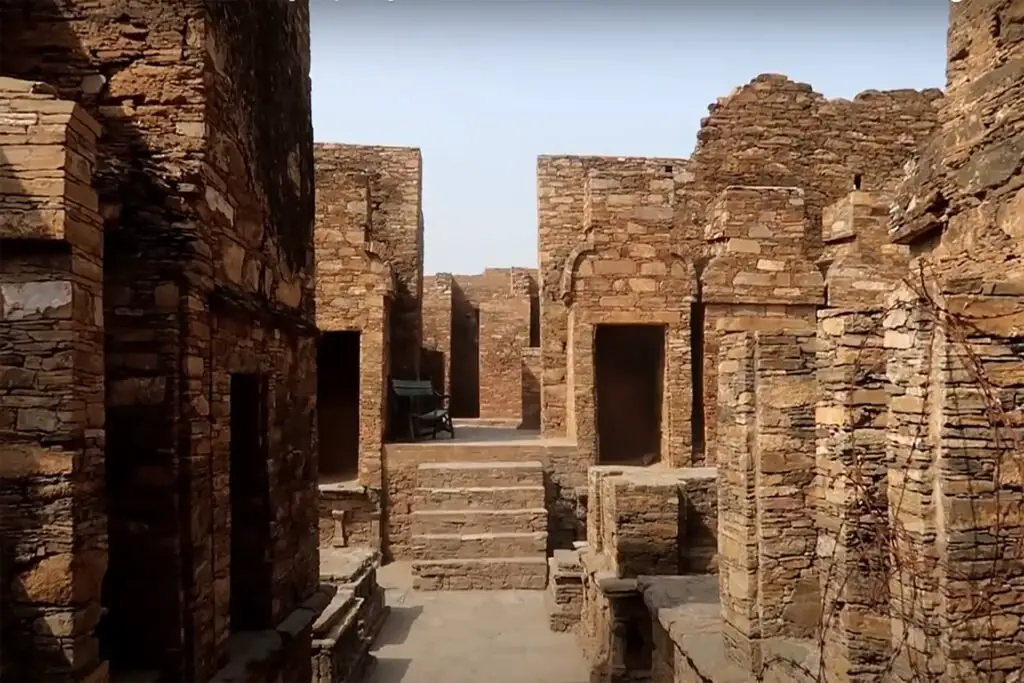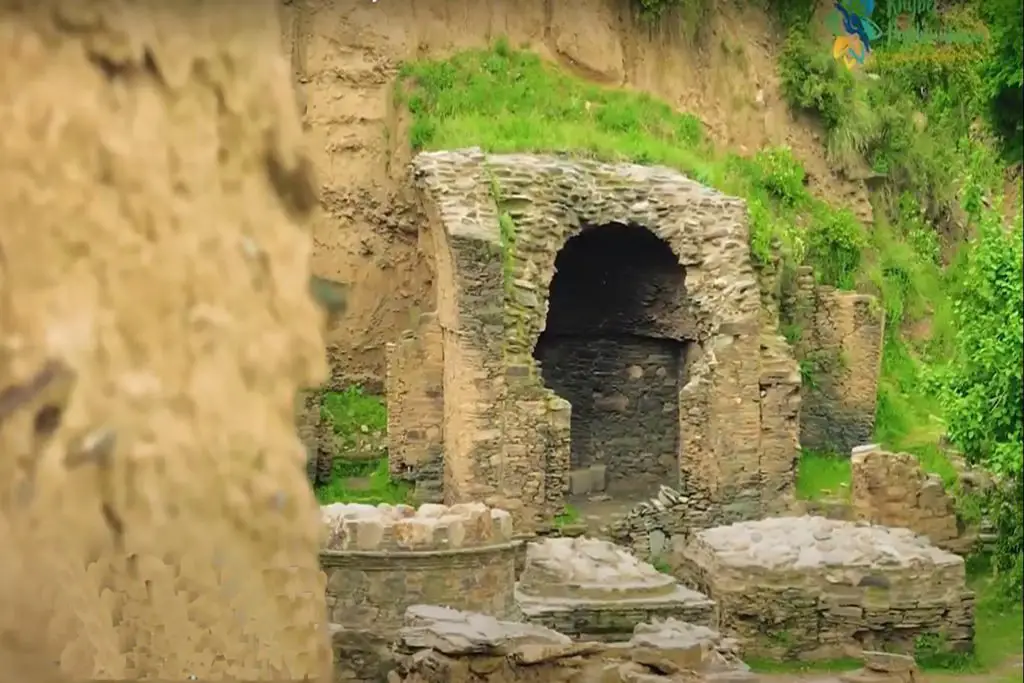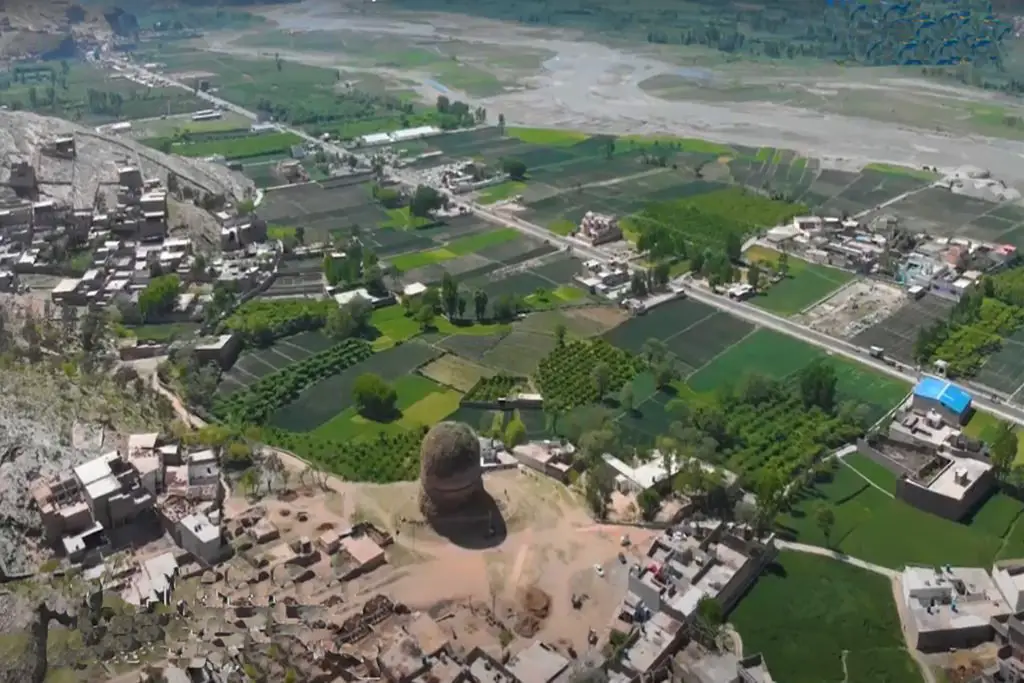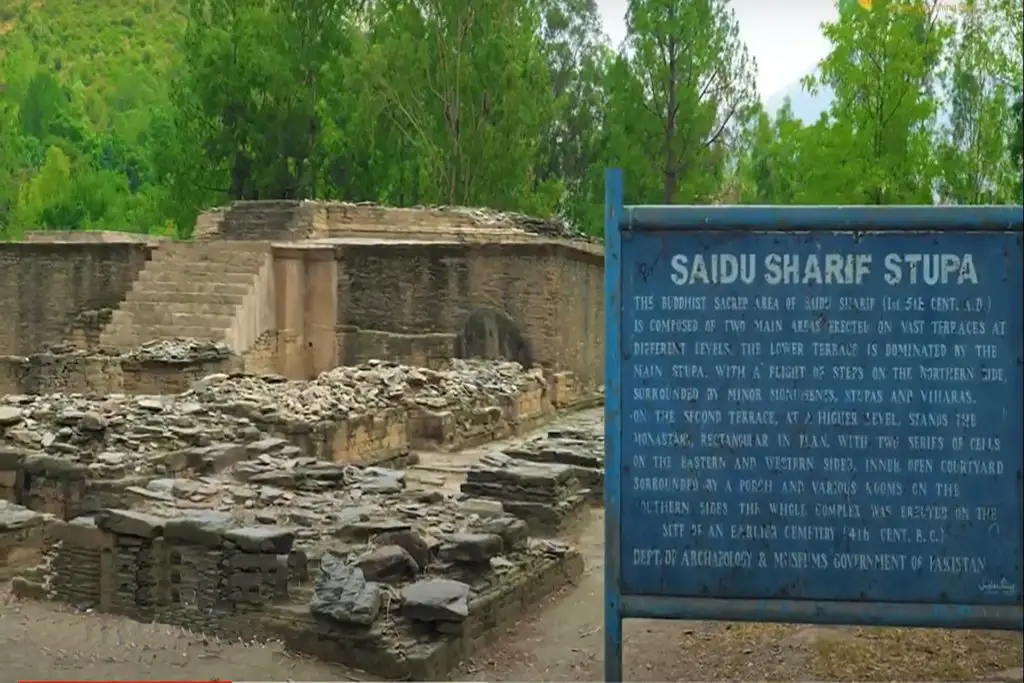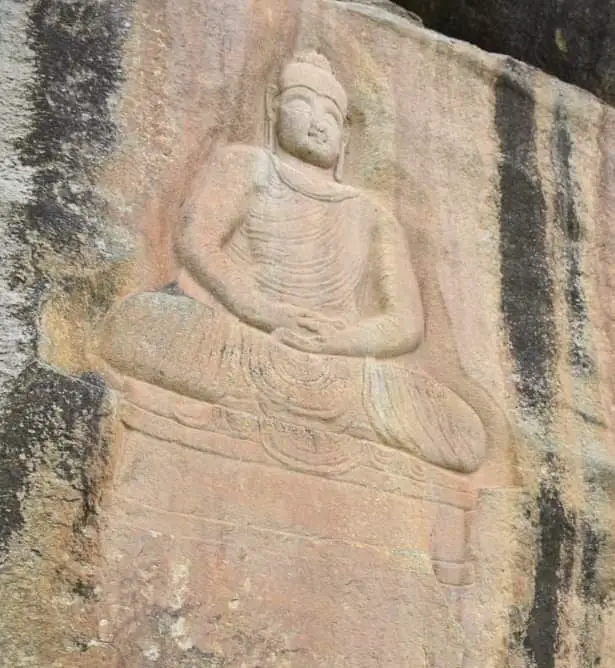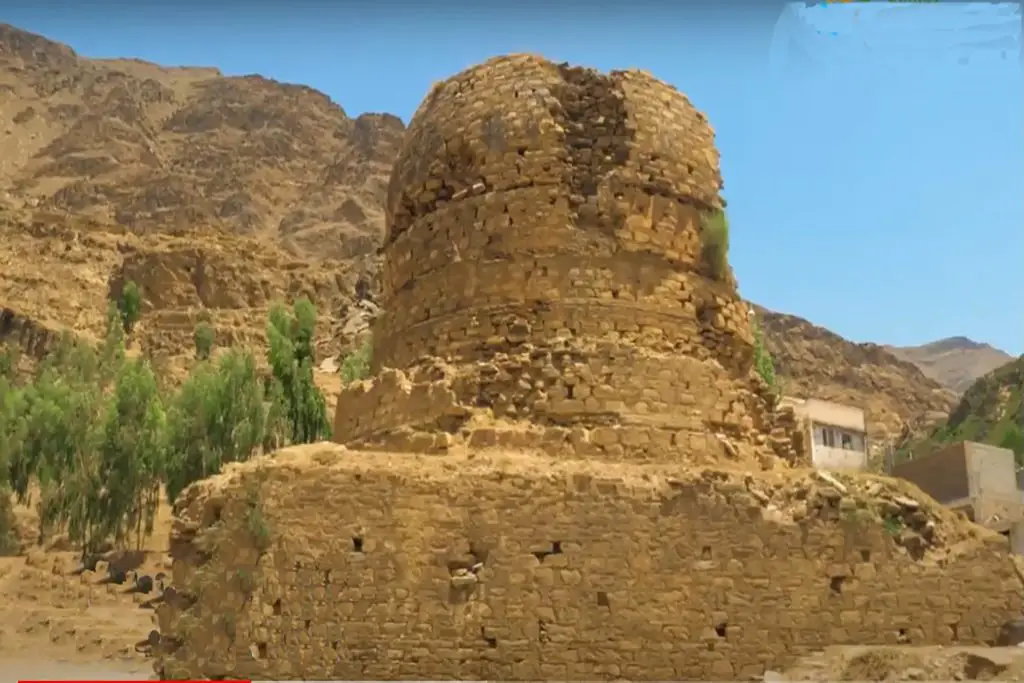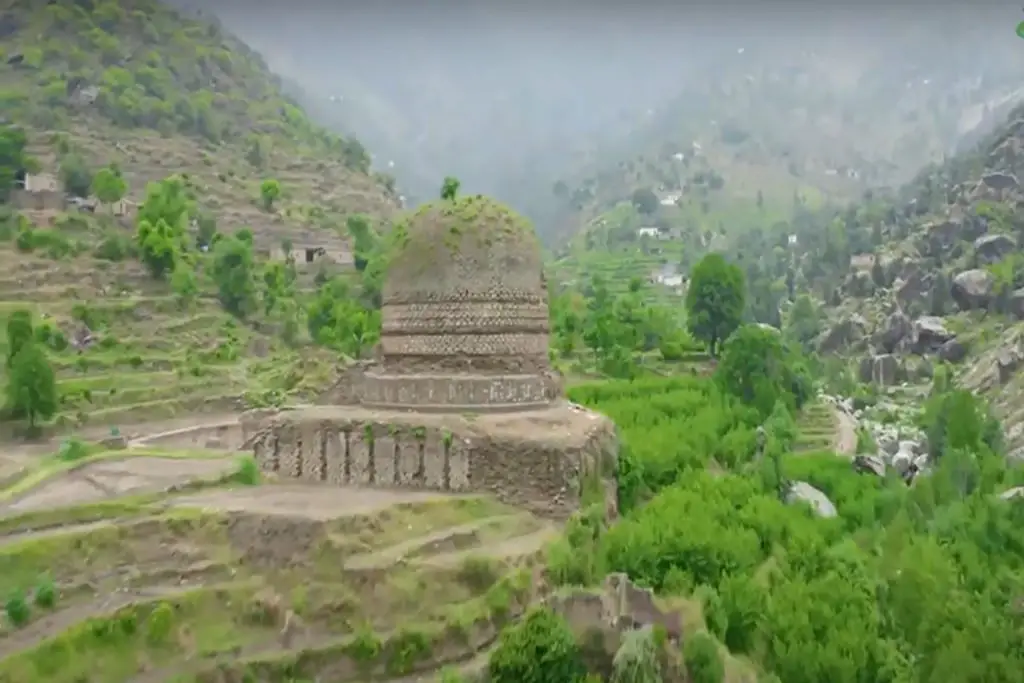Takht Bhai Heritage Monastery (throne of the water spring) is an Indo-Parthian archaeological site of an ancient Buddhist monastery in Mardan, Khyber-Pakhtunkhwa, Pakistan. The site is considered one of the most important Buddhist monuments in all of what was once Gandhara and was “exceptionally well preserved.”
The grand structure and imposing monuments of the Takht Bhai Heritage Monastery have captivated a large number of locals and tourists who flock to the ancient site, which dates back to the early 1st century AD.
History of Takht Bhai Heritage Monastery Mardan
The monastery was founded in the 1st century AD and served until the 7th century. The complex is considered by archaeologists to be particularly representative of the architecture of Buddhist monastic centers of its era. The Takht-i-Bahi was listed as a UNESCO World Heritage Site in 1980.
The Takht-i-Bahi (Throne of Origin) Buddhist monastic complex was founded in the early 1st century. Thanks to its location on the crest of a high hill, it escaped successive raids and is still exceptionally well-preserved. Nearby are the ruins of Sahr-i-Bahlol, a small walled city from the same period.
The Takht Bhai Heritage Monastery is a World Heritage Site and is considered to be one of the best-structured Buddhist monasteries in Gandhara.
Location of Takht Bhai Heritage Monastery
Takht Bhai Heritage Monastery is located about 500 feet on a small hill, about 2 kilometers east of Takht Bhai Bazaar in Mardan district of Khyber Pakhtunkhwa (KP), once known as the heart of Gandhara civilization, which attracts tourists, historians, archaeologists and Buddhists from all over the world.
The Buddhist complex and the village, locals say, are named after two wells found on top of a hill near the complex, however, most believe that takht means throne and bhai means water in the Persian language.
A brief synthesis of Takht Bhai
The Buddhist ruins of Takht Bhai Heritage Monastery and the adjacent remains of the city at Sahr-i-Bahlol are some of the most impressive monuments of Buddhism in the Gandhara region of Pakistan. The registered property consists of two distinct components, both of which date from the same period.
The Buddhist ruins of Takht Bhai Heritage Monastery (Throne of Origin) is a monastic complex, founded in the early 1st century AD, is magnificently located on various hilltops ranging in height from 36.6 meters to 152.4 meters, typical of Buddhist sites. The grounds cover an area of around 33 ha.
The Buddhist monastery was used continuously until the 7th century AD. Consisting of a collection of buildings, it is the most complete Buddhist monastery in Pakistan. The buildings were constructed of stone in Gandhara (diaper style) patterns using local stone blocks dressed and semi-dressed in lime and mud mortar.
Today, the ruins include a main stupa court, a votive stupa court, a group of three stupas, a monastic quadrangle with meditation cells, a conference hall, covered stepped corridors, and other secular buildings.
The second component, the remains of a neighboring city at Sahr-i-Bahlol, is located approximately 5 km away in a fertile plain. The ruins of Seri Bahlol are the remains of a small ancient walled city from the Kushan period. The city is spread over an elongated mound up to 9 meters high and is surrounded by sections of defensive walls in the “diaper” style characteristic of the first two or three centuries AD. The area covered is 9.7 hectares.
The Buddhist ruins of Takht Bhai Heritage Monastery and the adjacent city remains at Sahr-i-Bahlol in their setting, architectural form, design, and construction techniques are the most characteristic examples of the development of monastic and urban communities in the Gandharan region between the 1st and 7th. century AD.
Integrity
Due to its location on the high hills of the Buddhist ruins of Takht Bhai Heritage Monastery, it has escaped successive invasions and is exceptionally well preserved.
The boundaries of the ancient walled city of Sahr-i-Bahlol are well defined, with part of the walls still intact, albeit in a deteriorated state. The site is increasingly threatened by encroachment, even though the growth of the settlement took place before 1911 when it was declared a protected monument under the Act on Monument Preservation. The houses were built right on top of the ancient ruins, and only the remains of the perimeter wall have survived. The current land boundaries are considered insufficient due to increasing urbanization.
The registered land is also threatened by a number of other factors including uncontrolled vegetation leading to one of the main causes of decay, insufficient drainage, and insufficient security against unauthorized animal and human encroachment and illegal excavation. Pollution from local factories and vehicular traffic is also a serious threat, contributing to the deterioration of the site.
Authenticity
The Buddhist ruins of Takht Bhai Heritage Monastery have a high environmental authenticity as they continue to occupy their original location on the hill. The authenticity of form and design has been preserved and the layout of the monastery complex and buildings are visible. The authenticity of the materials as well as the tradition and technique of construction is preserved in the stone construction in Gandhara patterns (diaper style). The stone sculptures were taken to the Peshawar Museum and the stone inscription of Gondophares is preserved in the Lahore Museum.
The neighboring remains of the ancient city of Sahr-i-Bahlol are threatened by urban expansion. The original sculptures from the site were removed and are housed in the Peshawar Museum. The management plan points to a lack of documentation and a lack of a skilled workforce of artisans trained in traditional diaper patterning techniques.
Protection and Administration Requirements
Both components of the Buddhist ruins of Takht Bhai Heritage Monastery and the neighboring urban remains at Sahr-i-Bahlol have been identified as protected monuments under the Antiquities Preservation Act (1904) and subsequently the Antiquities Act (1975) of the Federal Government of Pakistan.
Proposals to amend and strengthen the Monuments Act are being considered. The ruins of Takht-i-Bahi are owned by the Federal Ministry of Archaeology, and the ruins of Sahr-i-Bahlol are private property owned by the local Khans. The government established a sub-regional office with a corresponding professional, technical, and guard department. employees and have allocated financial resources through the annual budget.
Likewise, a public sector development program is provided to maintain and protect the site through regular and rigorous programs of repair and conservation. Management responsibility rests with the Provincial Department of Archeology (Khyber Pakhtunkhwa Province) based in Peshawar. A master plan for the Buddhist ruins of Takht Bhai Heritage Monastery and the adjacent city remains at Sahr-i-Bahlol was prepared in 2011.
It is intended as a working document for the site manager and is also designed to provide a detailed holistic framework for the conservation of the listed property and provides principles for management through a priority action plan covering a range of areas of concern from site protection to visitor management. The aforementioned threat of urbanization suggests that the land boundaries are insufficient.
As a result, a revision of the property boundaries is being seriously considered, along with the intention to acquire land around the site and create a larger buffer zone. In an effort to control urbanization, the entire 445-hectare mountain area was recently declared an “archaeological reserve” by the provincial government of Khyber Pakhtunkhwa. There remains a need for more adequate documentation of remains and more capacity building for artisans in traditional building techniques.

